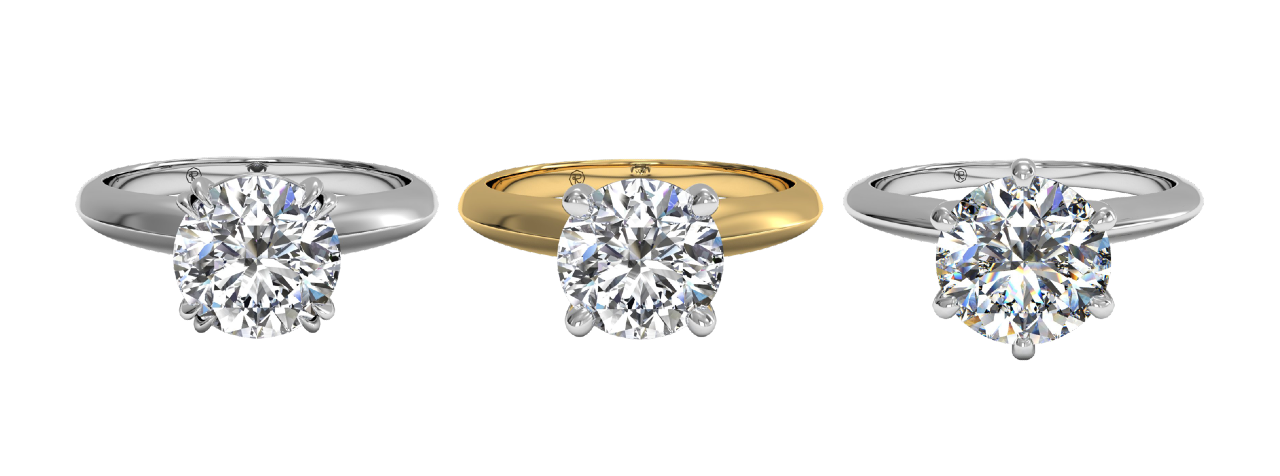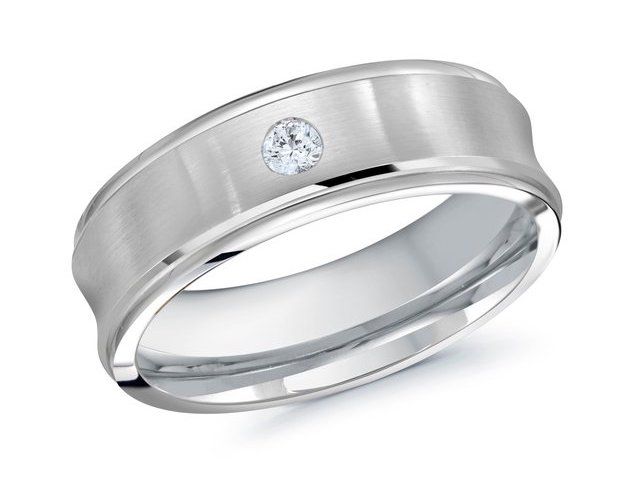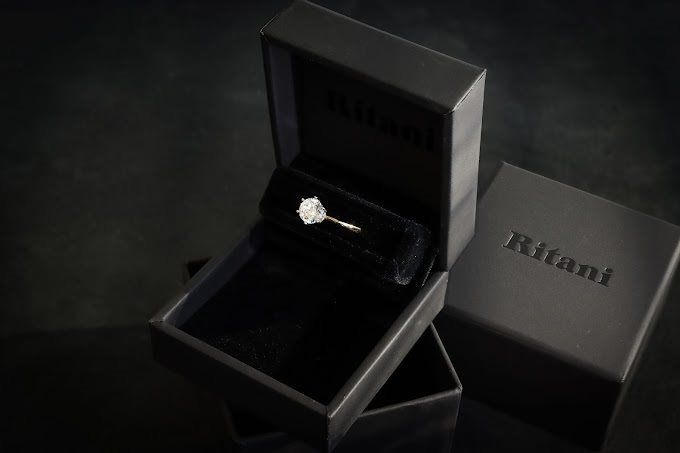The Top Diamond Shapes for Engagement Rings
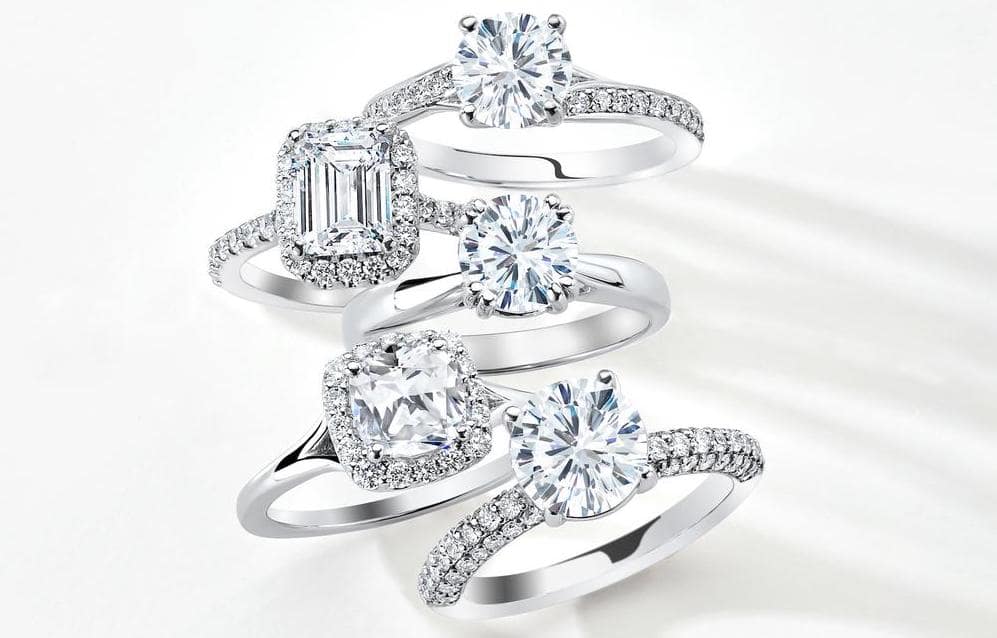
Shopping for a diamond engagement ring is a joyous and exhilarating venture that demands thorough attention to various factors, with the diamond shape being one of the most critical. The diamond shape not only impacts the ring's overall look but also plays a vital role in determining its light reflection and sparkle. While the classic round shape remains the reigning top choice, shapes such as the oval diamond have made a robust comeback. Here is a comprehensive guide to the most popular diamond shapes in 2023.
1. Round
Let's start with the quintessential diamond shape for an engagement ring: the round, brilliant-cut diamond. Year after year, the round shape remains the top choice for engagement rings and is a timeless style that will never look dated. Round diamonds account for over 50% of all engagement rings sold this year. Its 58 facets give it the most intense sparkle of any diamond shape, and its symmetry makes it a versatile choice for any ring setting style.
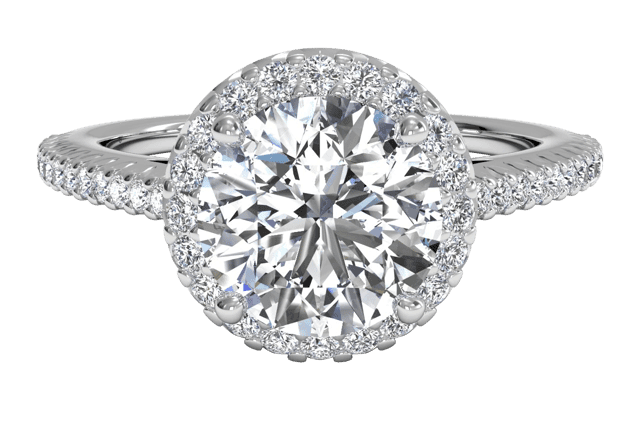
2. Princess
While square-shaped diamonds have a long history, the princess cut is a relatively new addition to the engagement ring market, making its debut in the 1980s. One of the advantages of princess cut diamonds is that there is no standardized number of facets, resulting in a truly unique diamond. Due to their flat sides, princess cuts are versatile because side stones can be easily mounted next to the center diamond. In addition, they usually cost less than round and brilliant-cut diamonds of the same quality and carat weight because cutters can retain a greater percentage of the rough diamond crystal when cutting a princess diamond. The princess cut is also known for its incredible brilliance and fire, making it an optimal choice for those who want a modern, clean look with bountiful sparkle in their ring.
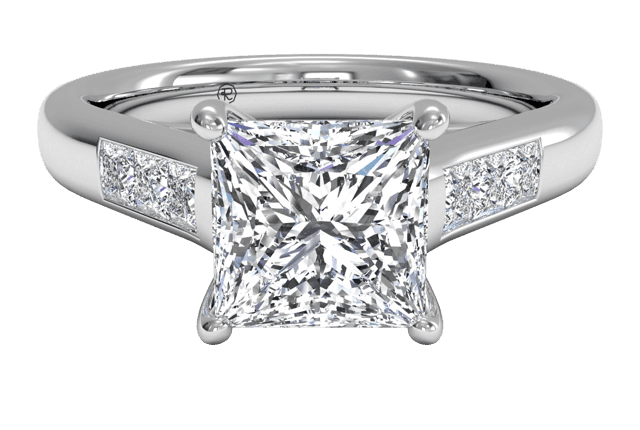
3. Emerald
Engagement rings with diamonds in rectangular shapes, like emerald cuts, are also quite popular. Unlike round and princess cuts, emerald cuts feature step-cut facets that give them a distinctive elegance with a more subdued sparkle than the former shapes. Without the intricate scintillation of brilliant cuts, flaws become more apparent in emerald-cut diamonds. Hence, the clarity grade of this diamond shape becomes crucial, making it necessary to look for "eye-clean" stones with a clarity grade of at least VS2 or higher. Emerald-cut diamonds are highly adaptable and can fit any aesthetic. Their art-deco vintage appeal and the lengthening and slimming effect on the wearer's finger have influenced their popularity. The emerald shape is also great for those who want the look of a larger stone, as the elongated shape makes the diamond look more substantial than its actual carat size.
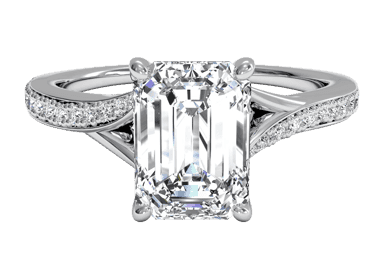
4. Cushion
Cushion cut diamonds can have either a square or rectangular silhouette, but what sets cushions apart from other square and rectangle-shaped diamonds are their rounded corners and often slightly sloped sides, giving them a forgiving profile that some enthusiasts liken to the shape of a pillow, hence their "pillow cut" nickname. Cushion cuts, like other brilliant-cut stones, have ample sparkle. A well-cut cushion diamond will display what is referred to as "fire," dispersing bright and colorful flashes of light to maximum effect. In recent years, cushion cut diamonds have made a resurgence, becoming a popular and affordable choice for engagement rings. Due to their soft contours, cushion-cut diamonds are a solid choice for someone looking for a stone that best complements elegant and understated ring settings. They can be placed in halo settings or stand-alone solitaire designs, giving jewelers much flexibility in creating unique and beautiful rings.
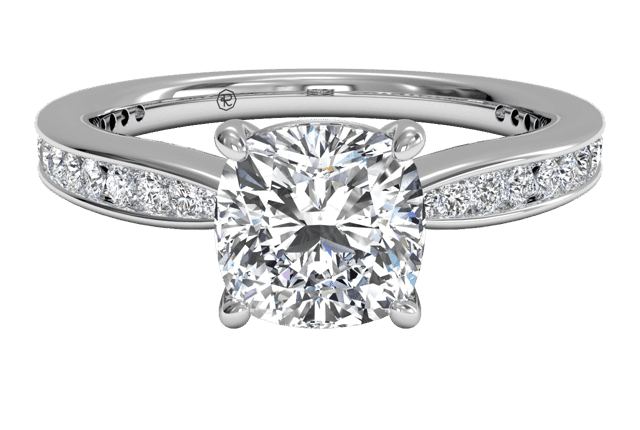
5. Asscher
Asscher-cut diamonds offer a sleek and streamlined alternative to other square or rectangular shapes. Patented in the early 1900s, their elongated, geometric facets and precisely angled corners create a modern, bold look with a sleeker appearance than cushion cuts. Similar to other step-cut stones like emerald-cut diamonds, it is essential to consider an Asscher-cut stone's clarity grade, opting for stones graded VS2 or higher to ensure optimal clarity.
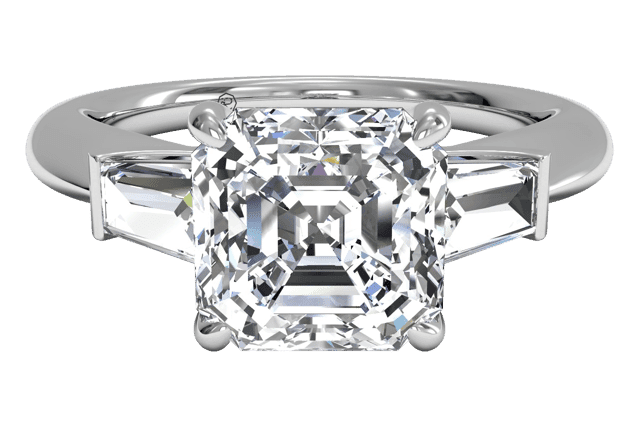
6. Marquise
The marquise-cut diamond has pointed ends and an elongated shape resembling a football. Its bold appearance makes it an excellent choice for those who want an eye-catching ring. Additionally, the marquise cut boasts an exceptional sparkle and fire, making it a popular choice for those who seek a ring with plenty of shimmer. Created in the mid-1700s, the marquise cut is also called a "navette" or "little boat" due to its shape, which resembles a ship with a rounded middle and points on either end. The marquise cut can be set alone or with various side stones of different shapes. The elongated shape of the marquise cut is incredibly versatile. Wearing it lengthwise creates an illusion of longer fingers, whereas an east-to-west alignment gives it a modern and dramatic appearance. A marquise cut is also an excellent option for those who want a sizeable-looking diamond, as it appears larger than diamonds with other cuts of the same carat weight. Due to their geometric shape, symmetry is critical when selecting a marquise-cut diamond. Look for stones with points aligned along the centerline and equal curvature along the sides while avoiding poorly proportioned diamonds with a dark feature called a "bowtie," which looks like two dark triangles intersecting in the center of the stone. Since the marquise diamond has delicate tips, opt for a protective setting when selecting an engagement ring with this type of stone. Whether that means robust prongs, a bezel setting, or a halo setting, it is crucial to safeguard the pointed ends.
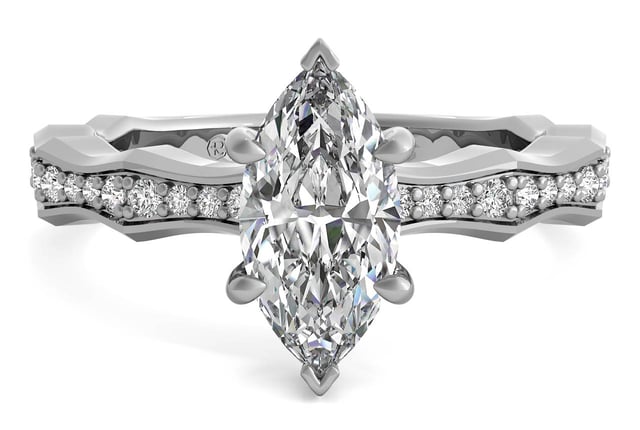
7. Oval
Due to a handful of celebrity engagement rings, there is an upswing in the popularity of oval-shaped brilliant-cut diamonds. The outline of an oval diamond is essentially the same as that of a marquise-cut stone, except that the tips are rounded rather than pointed. Ovals and marquises share several characteristics. First, their elongated outlines flatter any finger shape, offering the wearer a lengthening and slimming effect. Second, like marquise diamonds, ovals offer an excellent value for buyers who want a visually impressive diamond, since these elongated stones always appear larger than their actual carat weight. Lastly, the symmetry and proportion of oval diamonds are crucial to achieving the ideal oval shape. Like marquise diamonds, poorly proportioned oval diamonds may exhibit bowties across their middles, which some consider an undesirable attribute that lessens the appearance and value of the stone. Nevertheless, unlike marquise diamonds, some people find the bowties of ovals attractive. Oval diamonds suit various engagement ring styles, either as a beautiful solitaire or in a ring with more creative impact, such as combining oval center stones with multiple side stones.
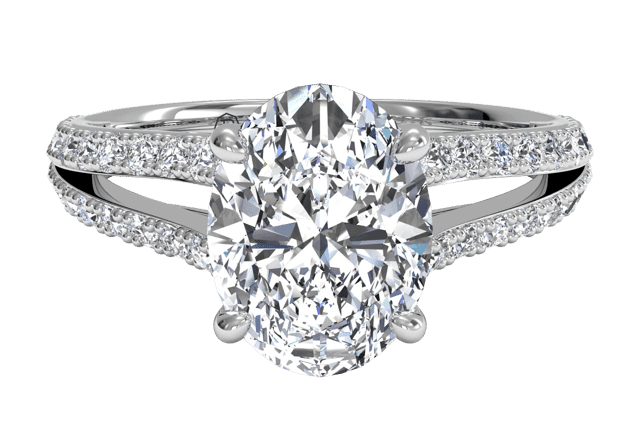
8. Pear
Often referred to as "teardrop diamonds," pear diamonds are a hybrid between marquises and ovals and were first cut in the 15th century. They have a pointed end and a rounded curve at the other. Like marquises and ovals, pear-shaped diamonds are flattering, giving the illusion of longer, slimmer fingers. Choosing a stone with an outline that mimics the shape of your finger can ensure that your pear diamond has a lengthening effect. Slimmer pear diamonds suit those with slender fingers, while rounder pears flatter those with thicker fingers. The most traditional way to wear a pear-shaped engagement ring is with the point away from the body towards the end of the finger. However, there are no hard and fast rules for how to wear pear diamonds, leaving it to preference. There are many setting options for pear-shaped diamonds. Although often set vertically, pear diamonds can also be mounted in an east-west orientation, creating a charming and unconventional look. Choosing a pear diamond with a halo setting, lined with smaller diamonds, amplifies the diamond making it appear more sizable. For those interested in three-stone or five-stone settings, a central pear can be flanked by smaller diamonds, and may even be set at an angle to create a bolder look. Pear diamonds are also a fantastic option for individuals who desire plenty of sparkle in their ring due to their intense fire and brilliance.
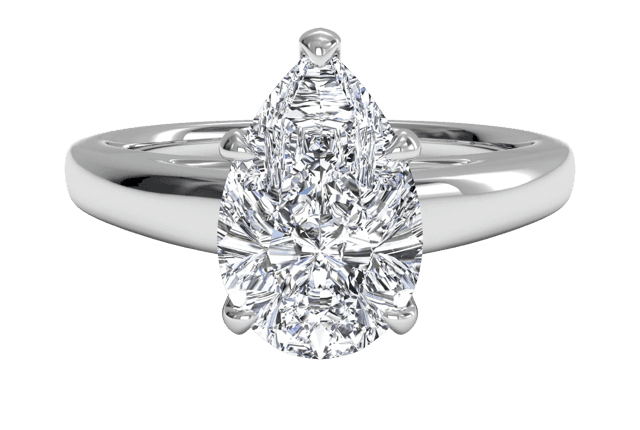
Ultimately, the diamond shape you choose depends on personal preference and style. A reputable jeweler can also help you find the ideal diamond shape to suit your hand shape, finger length, style, and budget. Opting for a lab-grown diamond engagement ring will enable you to get an even larger carat-weight diamond, giving you more sparkle for your budget! Whichever shape diamond you choose, the perfect engagement ring is out there waiting for you.
We can help you create the custom diamond engagement ring you've always wanted—contact us today!
